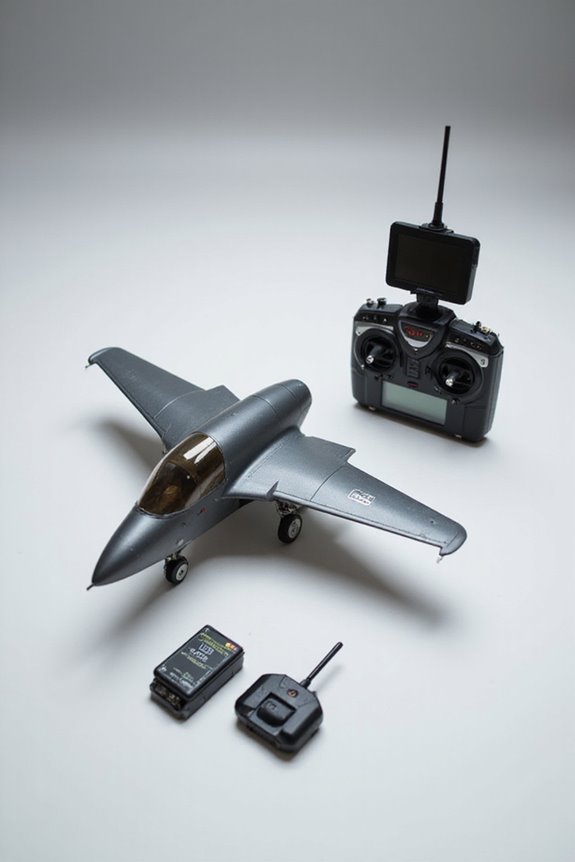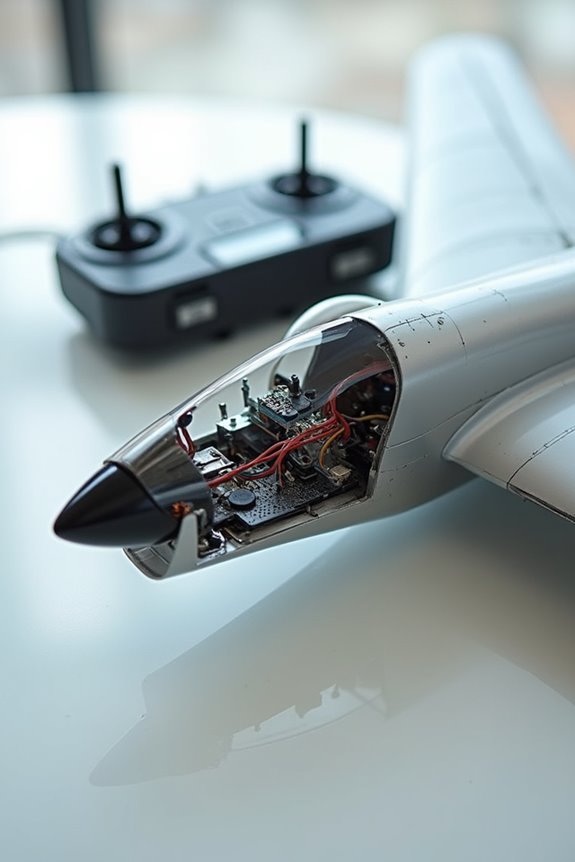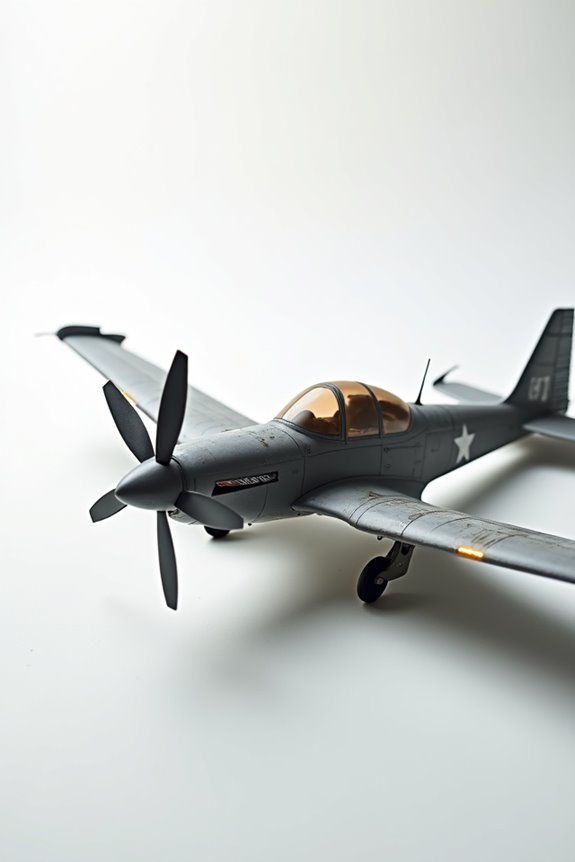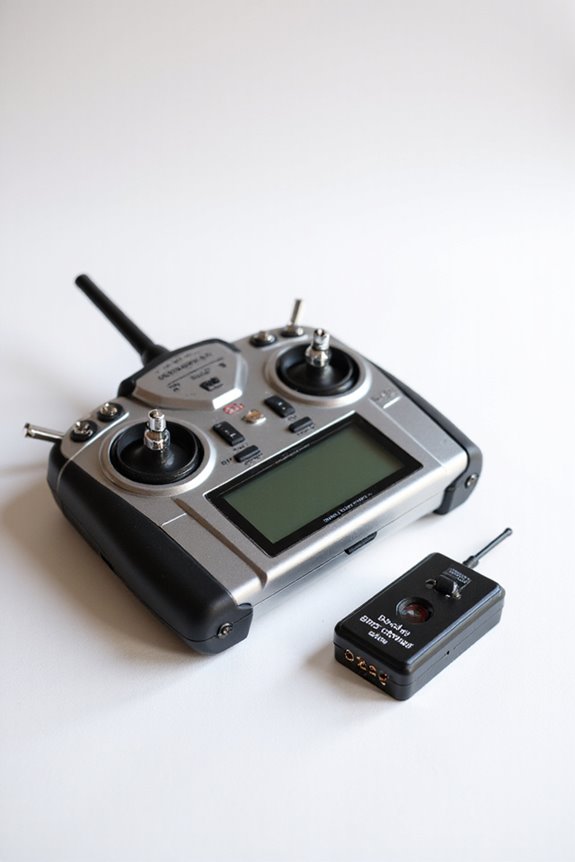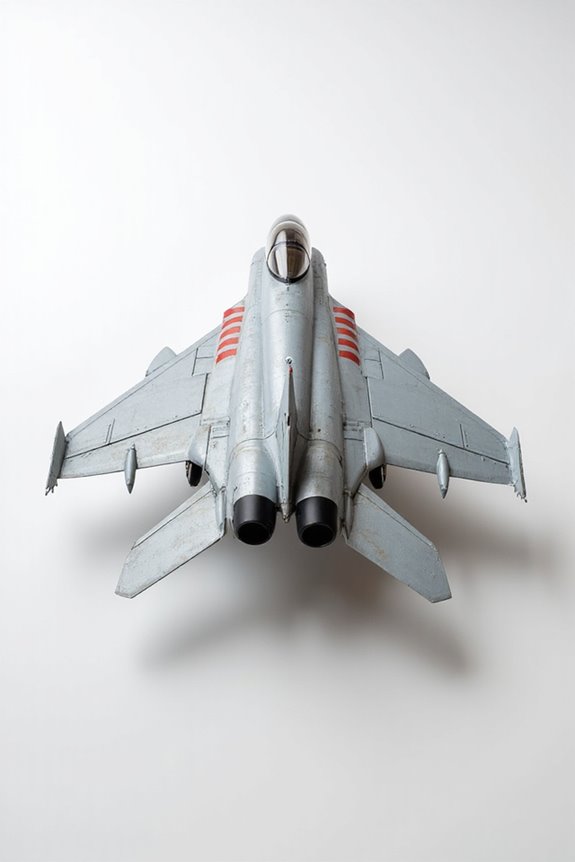When searching for the best telemetry systems for RC planes, we can’t go wrong with Spektrum or FrSky. Spektrum’s color screen and seamless sensor integration are stellar. FrSky offers extensive customization, which we love. Don’t forget advanced options like the Dragonlink V3 for long-range telemetry and handy sensors, like voltage monitors, to keep us in the air. Curious about how to maximize our range and reliability? Stick around for more tips!
Key Takeaways
- Spektrum offers seamless integration with sensors for vital statistics like battery voltage and temperature, topped with a clear 5-inch color display.
- FrSky provides extensive customization options, capable of relaying diverse data from GPS to RSSI signals for enhanced monitoring.
- The Dragonlink V3 Telemetry System features bidirectional telemetry and Bluetooth connectivity, enhancing real-time data transfer and configuration via mobile devices.
- Essential sensors like altitude and battery voltage sensors enhance safety, preventing issues like mid-air collisions and dead batteries during flight.
- Choosing the optimal frequency bands, such as 433 MHz for range, can significantly enhance the reliability and performance of telemetry systems.
Overview of Popular Telemetry Systems
When it comes to telemetry systems for RC planes, we’re spoiled for choice. Brands like Spektrum offer seamless integration within their ecosystem, supporting sensors for essential data like voltage and temperature. Imagine flying with clear readouts on a 5-inch color screen—talk about a pilot’s dream!
On the flip side, FrSky provides tons of customization options, especially for those with a techie side. Their telemetry can relay everything from GPS to RSSI signals, enhancing your flight experience. Plus, with community support, tweaking your setup becomes a fun project rather than a chore.
Whether you’re after plug-and-play simplicity or deep customization, there’s a telemetry system out there ready to elevate your flying game. Let’s explore the details next!
Key Features to Consider in Telemetry Systems
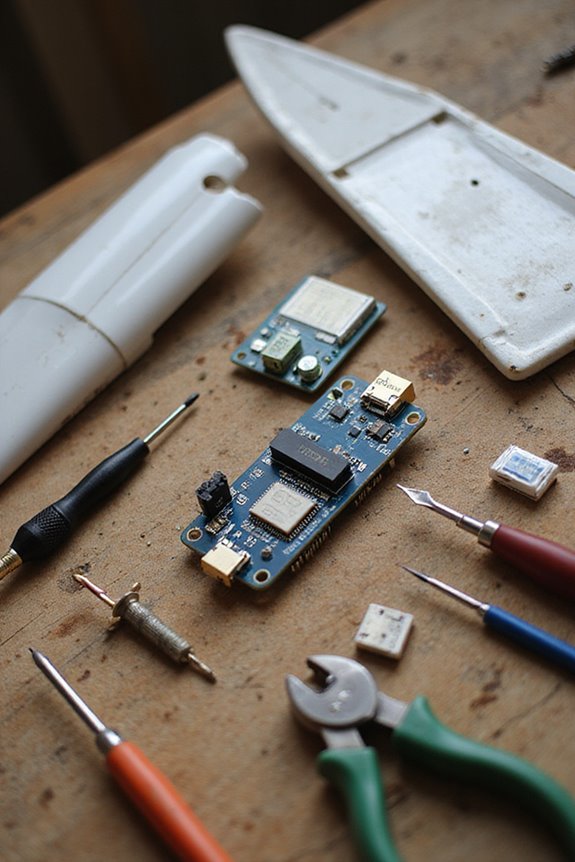
Choosing the right telemetry system for your RC plane is indispensable. We want features that enhance our flying experience and safety. First off, sensor integration is key. It allows us to monitor essential stats like battery levels and GPS coordinates. Next, real-time monitoring keeps us informed during flights, avoiding surprises when we’re in the air.
Compatibility is also important. Our telemetry system must work seamlessly with our plane and transmitter. Finally, feedback mechanisms are handy; audible alerts can save a flight from disaster when the battery’s running low. So, let’s guarantee we’re equipped with the right features and enjoy smooth flights, minus the heart-stopping moments! Happy flying!
Advanced Transmitter Options for Enhanced Telemetry
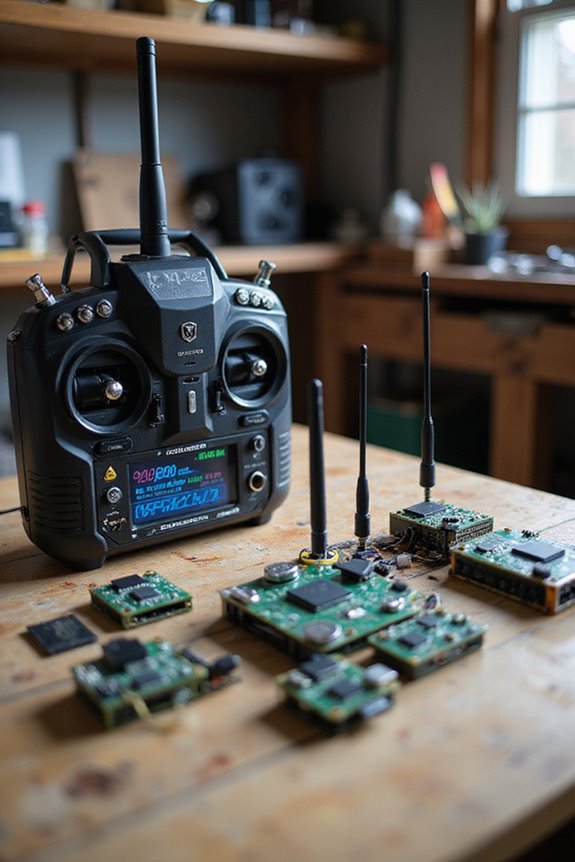
With the rise of advanced transmitter options, we can truly elevate our telemetry game. One fantastic choice is the Dragonlink V3 Telemetry System, which boasts bidirectional telemetry up to 50 km with just the stock antennas. Talk about range!
Then there’s the iMSB functionality. This integrates seamlessly with popular 2.4 GHz transmitters like FrSky. It allows for real-time data transfer and even has Bluetooth connectivity for easy configuration via our Android devices. Plus, who doesn’t love a good voice command to keep track of things during flight?
With features like low-voltage alerts and a lost plane finder, we can pilot our planes with confidence. So let’s take those Dragonlink advantages and iMSB features and enhance our flying adventures!
Video Transmission Compatibility With Telemetry
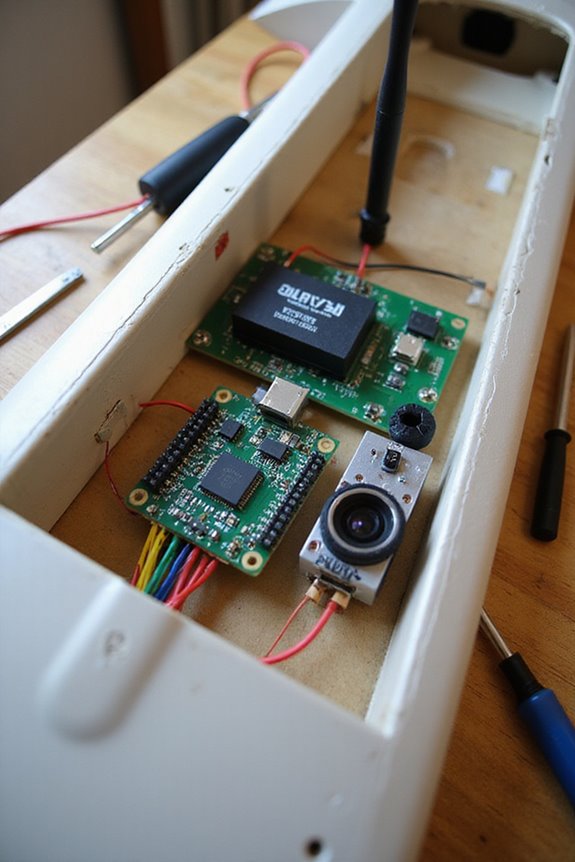
As we plunge into video transmission compatibility with telemetry, it’s clear that merging these two elements can dramatically enhance our flying experience. Using the right frequency bands can minimize signal interference. For example, 2.4 GHz is excellent for telemetry, while 5.8 GHz excels in streaming high-definition video formats without breaking a sweat.
However, we do face latency issues. Maintaining low latency for real-time feedback is essential, especially when zooming into another dimension at 60 fps. By employing integration methods like maintaining specific ports, our systems can effortlessly share bandwidth requirements. Just remember, higher video resolutions can eat bandwidth, potentially affecting telemetry refresh rates. Balancing these aspects strikes the perfect harmony for an exhilarating flight. Who knew flying could be so high-tech?
Essential Telemetry Sensors and Accessories
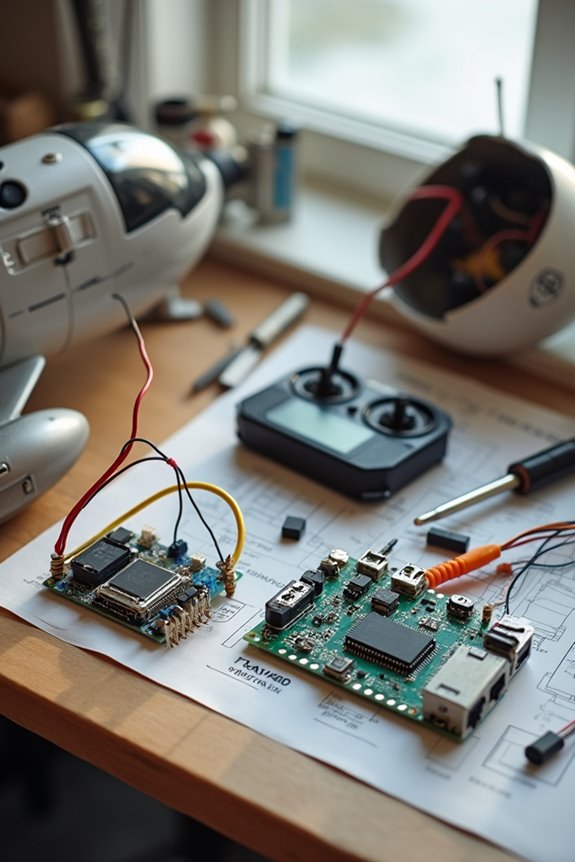
When we plunge into the world of telemetry for RC planes, it’s like upgrading from a bicycle to a sports car. Crucial telemetry sensors like altitude sensors help us avoid awkward mid-air encounters with obstacles—definitely something we want to avoid! They come in barometric or GPS varieties, but placement matters for accuracy.
Battery voltage sensors are our power saviors, preventing unexpected crashes due to dead batteries. Meanwhile, motor and propeller sensors keep an eye on performance, ensuring our trusty planes don’t overheat or underperform.
Don’t forget telemetry accessories—GPS sensors offer essential positioning data. Together, sensor integration across various systems keeps us connected and informed, making our flying experience safe, efficient, and oh-so-fun.
Maximizing Range and Reliability in Telemetry Systems
Maximizing range and reliability in our telemetry systems is like fitting a turbocharger onto our RC plane—it can take our flying experience to new heights! Choosing the right frequency bands is vital. Lower frequencies like 433 MHz offer impressive ranges, far surpassing the limited 2.4 GHz. We should also focus on signal optimization by strategically placing our transmitter and receiver to avoid obstacles.
Higher power output can blast through interference, while well-designed antennas boost reception. Implementing error correction protocols and real-time signal quality indicators helps keep our data flowing smoothly. Regular maintenance is key—like a well-oiled machine, our systems perform best when we give them some TLC. By taking these steps, we can soar with confidence!
Frequently Asked Questions
How Do I Troubleshoot Telemetry Signal Issues?
When we face frustrating signal interference, it’s essential we dive deep into troubleshooting tips. Let’s meticulously verify connections, assess firmware compatibility, and monitor signal quality to guarantee our telemetry systems function flawlessly for every flight!
Can Telemetry Systems Be Used in All Weather Conditions?
It is understood that telemetry systems aren’t foolproof in all weather conditions. However, with adequate weather resistance and telemetry durability, they can perform well in varied environments, though extreme conditions may still pose challenges to signal reliability.
What Is the Cost of Setting up Telemetry for RC Planes?
Imagine building a complex puzzle. Setting up telemetry for our RC planes involves careful budget considerations and a meticulous installation process, often costing between $50 to $200, depending on components we choose and upgrade needs.
Are There Telemetry Systems Compatible With Both Gliders and Drones?
Absolutely, we’ve found telemetry systems with glider compatibility and drone integration. These versatile systems, like FrSky’s offerings, let us use sensors across platforms, ensuring efficient monitoring and performance for both gliders and drones alike.
How Often Should Telemetry Sensors Be Calibrated for Accuracy?
We should prioritize sensor maintenance by calibrating temperature sensors annually, while voltage sensors need it every three to six months. Adjust calibration frequency based on environmental factors and previous sensor performance for accuracy.

